Israel boasts an array of world heritage sites for anyone looking for an experience in the dimensions of nature, history or religion. To foster awareness and preservation of unique places such as the ruins of Aksum in Ethiopia, the Belize Barrier Reef or the Sydney Opera House, the UN Educational, Scientific and Cultural Organization (UNESCO) designates places as World Heritage Sites. The designation lends prestige, boosts tourism, and can also mean international assistance in preserving the site.
At the beginning of 2019, Israel and the US withdrew from UNESCO to protest Arab politicization of the organization. The controversy is beyond the scope of this article. Readers can learn more at UN Watch and Haaretz. The politics does not diminish the historical and cultural significance of the world heritage sites in Israel.
Join the fight for Israel’s fair coverage in the news
UNESCO has designated nearly 1,100 World Heritage sites. If visiting heritage sites in Israel is on your bucket list, here are the places to know about.
Jerusalem’s Old City
Jerusalem’s Old City features some of the most important and ancient holy sites in the world — all enclosed within one square kilometer. Pilgrims from all over the world pass through the Old City walls (built during the reign of Suleiman the Magnificent) to visit the Temple Mount and its mosques (the iconic Dome of the Rock and Al-Aqsa Mosque), the Western Wall and the Church of the Holy Sepulcher.
UNESCO’s World Heritage designation doesn’t associate Jerusalem with Israel or the Palestinian Authority. Further angering Israel, the Old City was also placed on UNESCO’s list of Endangered World Heritage Sites.
More information at UNESCO and the Jerusalem Municipality.
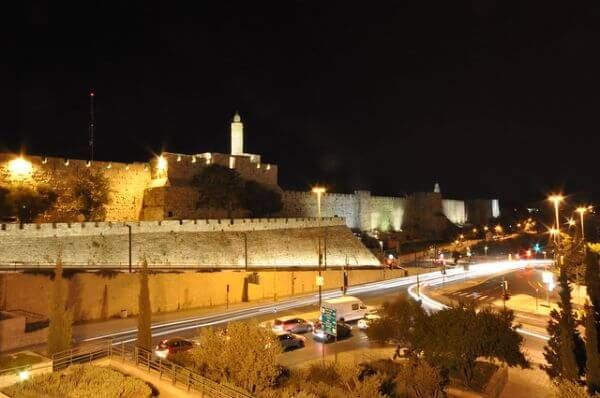
Related reading: Jewish Ties to the Temple Mount: What’s the Story?
Hebron’s Old Town
Hebron is one of the world’s oldest cities and the most-visited site in the Old City is the Tomb of the Patriarchs, the burial place of Abraham, Isaac and Jacob and their wives and is holy to Jews, Christians and Moslems. In 2017, UNESCO raised a firestorm of controversy and anger in Israel when it labeled Hebron’s Old City as an endangered Palestinian heritage site and ignored Jewish ties to the holy spot. It too is on UNESCO’s list of endangered World Heritage sites.
More information at UNESCO, the Israeli Ministry of Tourism and the Chamber of Commerce and Industry of Hebron.
Masada
This fortress complex built by Herod the Great sits atop a rock plateau some 450 meters above the Judean Desert and Dead Sea. Towards the end of the Jewish Revolt, besieged by the Roman Army, more than 900 Jews committed mass suicide, preferring to die free than to live as slaves.
Today, tourists can hike up Masada or take a cable car.
More information at UNESCO and the Israel Nature and Parks Authority.
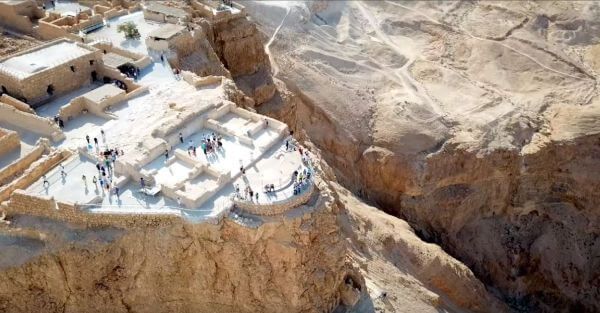
Beit Shearim Necropolis
The remains of Beit Shearim and its series of man-made catacombs are located near Haifa. Many Jews expelled from Jerusalem by the Romans moved north, making Beit Shearim an important and prosperous town. With no access to the Mount of Olives, the catacombs became a prominent burial site. Rabbi Yehuda HaNasi, the redactor of the Mishnah, is buried here. Beit Shearim is a symbol of Jewish resilience in the face of heavy-handed Roman rule.
More information at UNESCO and the Israel Nature and Parks Authority.
The Biblical Tels
The three sites — Tel Megiddo, Tel Hazor and Tel Beer Sheva — are collectively known as the “Biblical Tels” because they are all mentioned in the Bible. The Hebrew word tel means mound or hill, and in archaeological contexts refers to a hill with remnants or ruins covered inside its layers. (There are around 200 tels in Israel.)
Tel Megiddo, located near Nazareth, is the most well-known of the trio because its English name is Armageddon and is believed by some to be where a great battle at the end of days will occur. Tel Beer Sheva is generally regarded as having the most substantial remains of any city with Biblical connections. Tel Hazor is north of Safed, and historical and biblical analysis suggests Hazor was the largest and most important Canaanite city.
More information at UNESCO and the Israel Nature and Parks Authority sites for Tel Megiddo, Tel Hazor and Tel Beer Sheva.
Related reading: The Jewish Connection to the Land of Israel
Akko’s Old City
The Old City of Akko (or Acre) embodies Roman, Ottoman, Crusader, Mameluke, Byzantine and British influences. The current wall around the Old City was built in 1750 and survived Napoleon’s siege. A number of historical synagogues, churches and mosques stand as symbols of religious co-existence. Akko’s crown jewel is the Crusader citadel with its stone-vaulted halls.
More information at UNESCO and Old Akko Visitors Center.
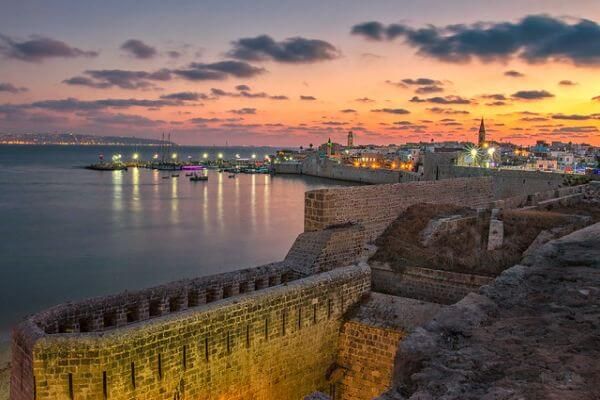
The Caves of Maresha and Bet Guvrin
Beit Guvrin is famed for its network of caves used as quarries, burial caves, storerooms, industrial facilities, hideouts and dovecotes. Located between Kiryat Gat and Bet Shemesh, the park also includes Tel Maresha, the remains of a Hellenistic town. Tourists and school children taking part in archaeological digs have been known to make interesting finds.
More information at UNESCO and the Israel Nature and Parks Authority.
Tel Aviv’s White City
Thanks to the arrival of German Jewish architects fleeing the Nazis, Tel Aviv has more Bauhaus-style buildings than any other city in the world. Tourists marvel at the linkage of architecture, design and art expressed in the buildings and how they all adapted to meet the unique needs of Tel Aviv.
More information at UNESCO and Bauhaus Center Tel Aviv.
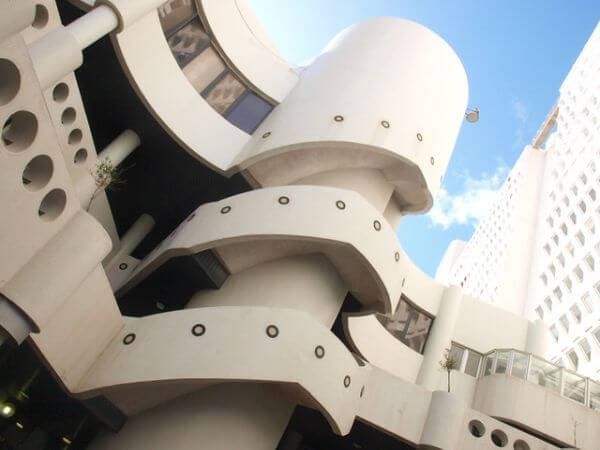
The Incense Route — Desert Cities
What’s left of four Nabataean towns in the Negev offers a glimpse into a important trade route. Merchants traveling between the Arabian peninsula and the Mediterranean would find shelter and provisions in Avdat, Mamshit, Shivta and Haluza. Archaeologists are learning a great deal about sophisticated Nabataean engineering skills from the remnants of the towns’ fortifications, irrigation systems and roadside inns.
More information at UNESCO and the Israel Nature and Parks Authority’s web sites for Avdat, Mamshit and Shivta. Haluza was discovered in the middle of an IDF firing range and is not easily accessible.
Haifa and Akko’s Bahai Gardens
The beautiful garden terraces around the Shrine of the Báb are one of Israel’s most popular tourist attractions. The gardens stretch almost a full kilometer up the side of Mount Carmel in Haifa and feature cascading water, terrace bridges and stunning views of the city.
Tourists, and even many Israelis, aren’t aware that the lesser-known Bahai Gardens in Akko also received World Heritage designation. The founder of the Bahá’í faith, Baha’u’llah, spent the last years of his life in Akko and is buried in the elegant garden.
More information at UNESCO and The Bahai Gardens.
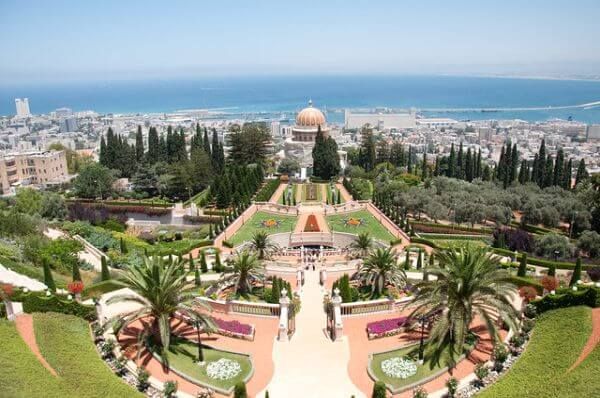
Nahal Me’arot/Wadi el-Mughara Caves
Located on Mount Carmel, near Haifa, the Nahal Me’arot caves feature the remnants of prehistoric humans, thought to be 12,000 years old, if not more. The caves were used for habitation, and contain evidence of the earliest practice of human burials. Tools and drawings found in the caves also reveal changing aspects of prehistoric human life over different periods.
More information at UNESCO and the Israel Nature and Parks Authority.
The Church of the Nativity
Located in Bethlehem, the Church of the Nativity is built on the location where Christians believe Jesus was born. It is the oldest church in daily use. The original basilica — which was commissioned by Emperor Constantine — was completed in 339 and parts of it still remain. The church in its present form was rebuilt by Byzantine Emperor Justinian I in 565.
The church is also on UNESCO’s list of endangered World Heritage sites.
More information at UNESCO and the Bethlehem municipality.
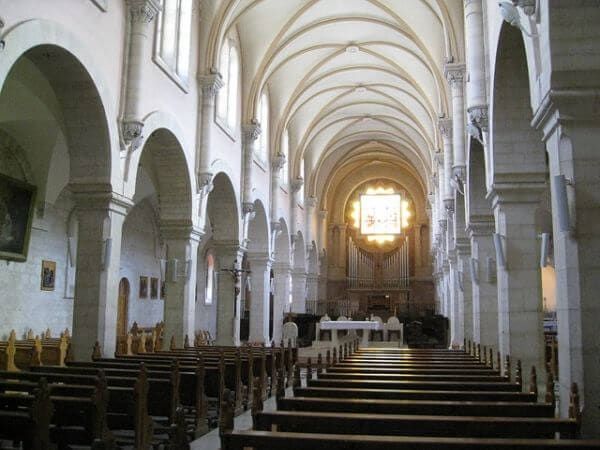
Related reading: Lessons From Palestinian Rule Over Jerusalem
Battir Terrace Farms
Located in the hills southwest of Jerusalem, Battir is celebrated for its ancient terraced farming and Roman-era irrigation still in use today. Amidst the picturesque green hills and stone walls, visitors will see olive trees and grape vines. However, no tourism infrastructure has been developed here. Battir is also on the UNESCO’s list of endangered World Heritage sites.
More information at UNESCO.
Future Designations
UNESCO is also considering other sites nominated by Israel and the Palestinian Authority for World Heritage designation. Places include the early synagogues of the Galilee, Ein Kerem, Caesarea, Qumran, the Al-Maghtas Baptism site and ancient Jericho among others. See the full list of Israeli and Palestinian nominations.
Much can be learned from Israel’s World Heritage sites. Cultural ties have great potential to bring people closer together.
Featured image: CC BY David II; Jerusalem CC BY Jorge Lascar; Masada via YouTube/deadsea; Akko harbor CC BY-NC-ND ilirjan rrumbullaku; Tel Aviv CC BY-NC copelaes; Haifa CC BY-SA Josh Evnin; Bethlehem CC BY Chris Yunker;
Before you comment on this article, please note our Comments Policy. Any comments deemed to be in breach of the policy will be removed at the editor’s discretion.

